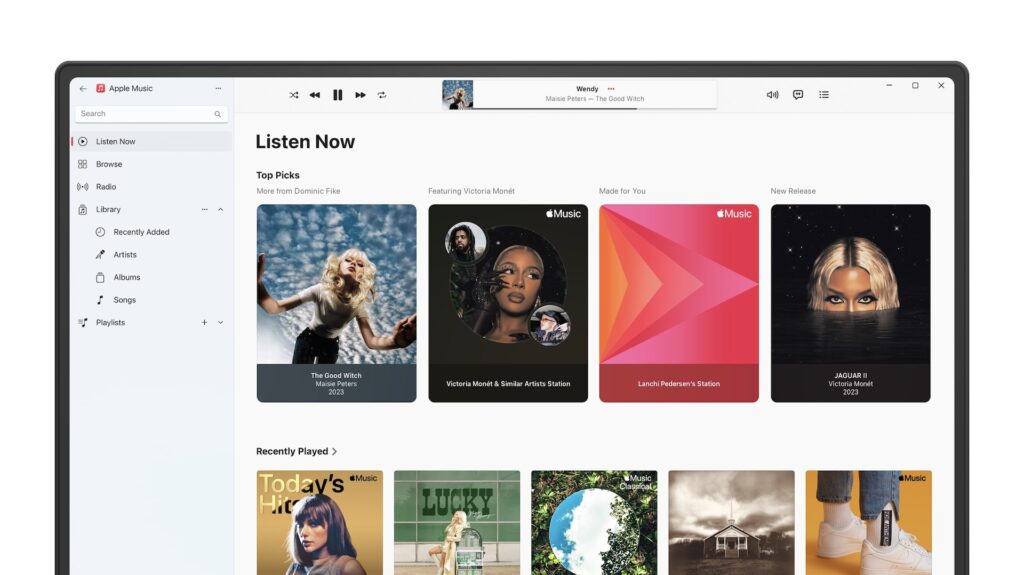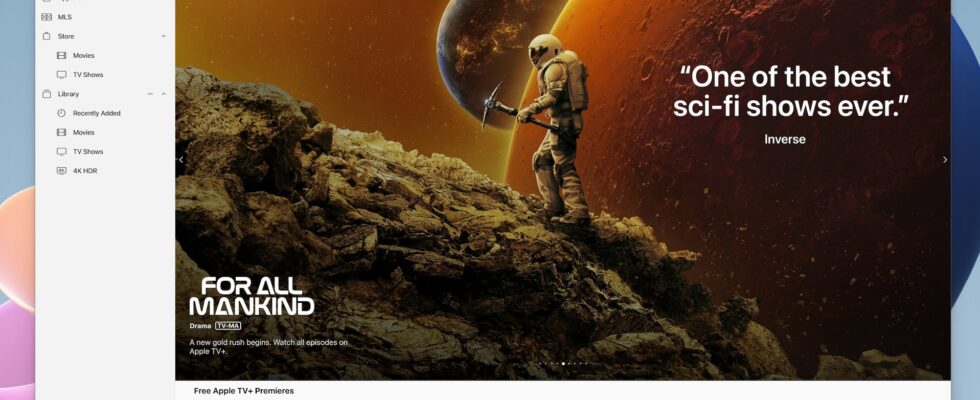You will no longer need iTunes to manage your Apple ecosystem from a Windows PC. The legendary software is replaced by 3 applications, each dedicated to a very specific task.
The days of iTunes are numbered and, a priori, no one will miss this old Apple software. As indicated Rudy Hyun, architect at Microsoft, in a tweet published on February 7, 2024, the Cupertino company has just launched three new applications for Windows. Their goal ? Replace iTunes with an experience close to what we find on macOS. They are available on Windows 10 like Windows 11.
In detail, Apple now offers Apple TV, Apple Music and Apple Devices to Windows users. This makes it possible to split the functionalities between several small software programs, rather than concentrating everything in the same place, within software that has largely served its time. iTunes will remain accessible for those who use an incompatible Windows, or to access certain specific features (podcasts and audiobooks).

iTunes gradually replaced on Windows
What are these different applications used for? Their name gives a good idea of what they offer:
- Apple Music allows you to manage your music library, including purchases made on iTunes or streaming playback (with a subscription).
- Apple TV allows you to manage your collection of films and series, or to access the Apple TV+ SVOD platform.
- Apple Devices allows you to manage your iPhone and iPad devices (restoration, update, backup backup, data synchronization).
Note that Apple forces the installation of these three applications, even if you only use one. “ After downloading Apple Music, Apple TV, and Apple Devices, you will no longer see your music or video content in iTunes. And you will no longer be able to use iTunes to manage your iPhone or iPad », Indicates the multinational in the support page.
In short, Apple Music, Apple TV and Apple Devices appear as substitutes that do not completely eliminate iTunes. They make it possible to separate uses which may seem diametrically opposed, with the aim of improving ergonomics and readability (with dedicated and more modern interfaces). For Apple, this is another way to draw a line under iTunes, which will continue to exist behind the scenes.
If you liked this article, you will like the following: don’t miss them by subscribing to Numerama on Google News.
